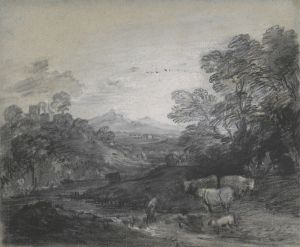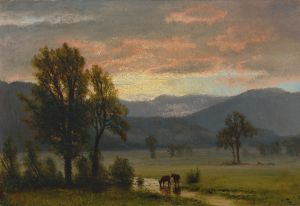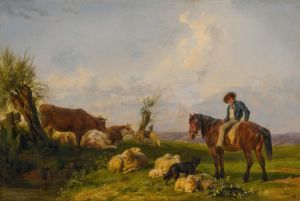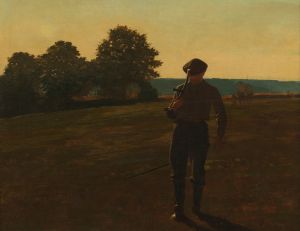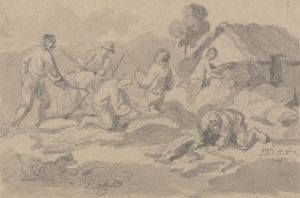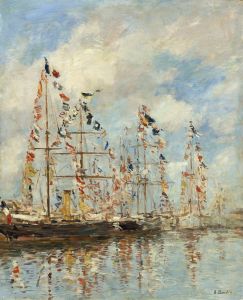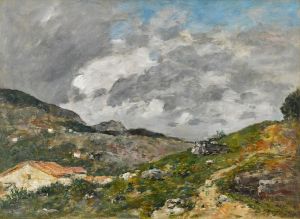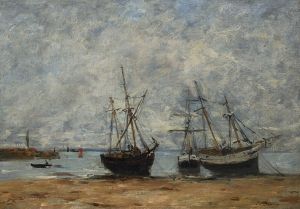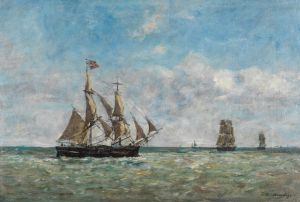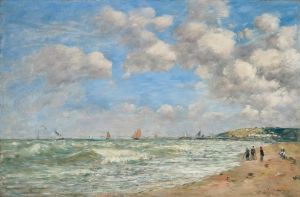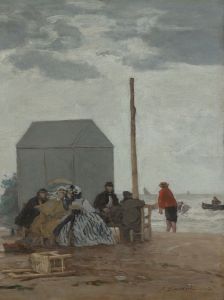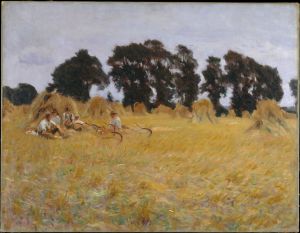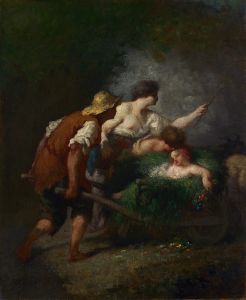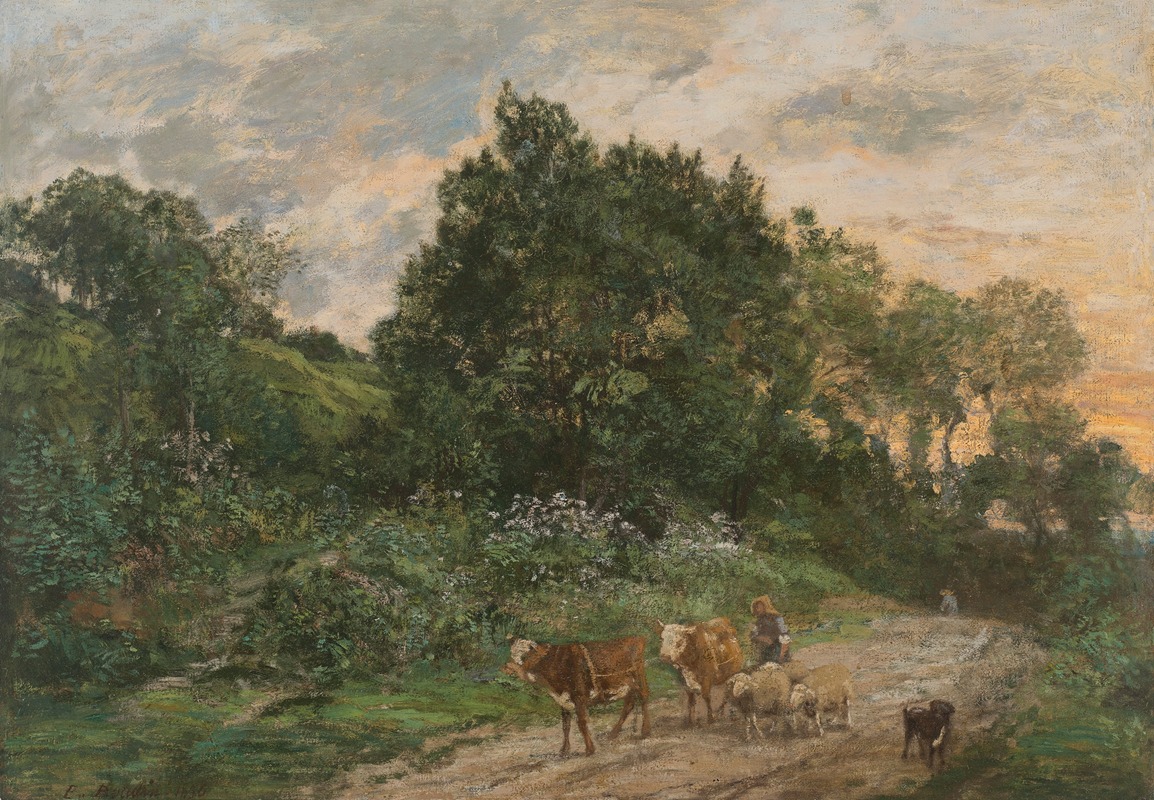
La rentrée du troupeau
A hand-painted replica of Eugène Boudin’s masterpiece La rentrée du troupeau, meticulously crafted by professional artists to capture the true essence of the original. Each piece is created with museum-quality canvas and rare mineral pigments, carefully painted by experienced artists with delicate brushstrokes and rich, layered colors to perfectly recreate the texture of the original artwork. Unlike machine-printed reproductions, this hand-painted version brings the painting to life, infused with the artist’s emotions and skill in every stroke. Whether for personal collection or home decoration, it instantly elevates the artistic atmosphere of any space.
Eugène Boudin's painting La rentrée du troupeau (translated as The Return of the Herd) is a work by the French artist, who is widely regarded as one of the precursors of Impressionism. Boudin, born in 1824 in Honfleur, France, is best known for his depictions of landscapes, seascapes, and rural scenes, often capturing the effects of light and atmosphere with remarkable sensitivity. His works frequently reflect his deep connection to the French countryside and coastal regions.
La rentrée du troupeau is a pastoral scene that depicts a herd of animals being guided back, likely to a farm or shelter, at the end of the day. The painting exemplifies Boudin's ability to convey the tranquility and rhythm of rural life. It also demonstrates his skill in portraying the interplay of light and shadow, a hallmark of his artistic style. The composition is characterized by its naturalistic depiction of the landscape and its atmospheric effects, which were achieved through Boudin's careful observation of nature.
Boudin's work often focused on the daily lives of ordinary people and the natural environment, and La rentrée du troupeau fits within this thematic framework. The painting reflects the artist's interest in capturing fleeting moments of rural life, a subject that resonated with the broader artistic movements of the 19th century. His approach to painting outdoors, or "en plein air," allowed him to study the changing effects of light and weather, which became a significant influence on the Impressionist movement.
The exact date of creation for La rentrée du troupeau is not definitively documented, but it is consistent with Boudin's broader body of work from the mid-to-late 19th century. During this period, Boudin produced numerous paintings that explored similar themes of rural and coastal life in France. His works were admired by contemporaries such as Claude Monet, who credited Boudin as a mentor and an early influence on his own artistic development.
Today, Boudin's paintings, including La rentrée du troupeau, are celebrated for their contribution to the evolution of modern art. His ability to capture the beauty of everyday scenes and his pioneering use of light and color have secured his place as a significant figure in art history. The painting is held in a private collection or museum, but specific details about its current location or provenance are not widely available.
This work remains an enduring example of Boudin's artistic legacy and his dedication to portraying the harmony between humans, animals, and the natural world.





